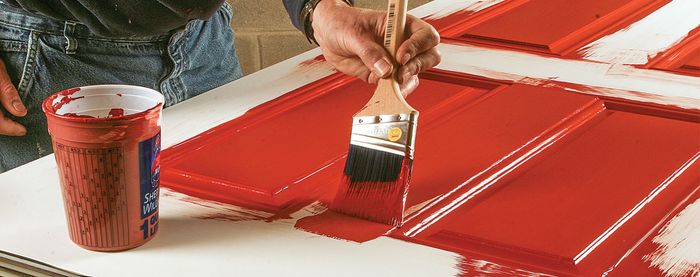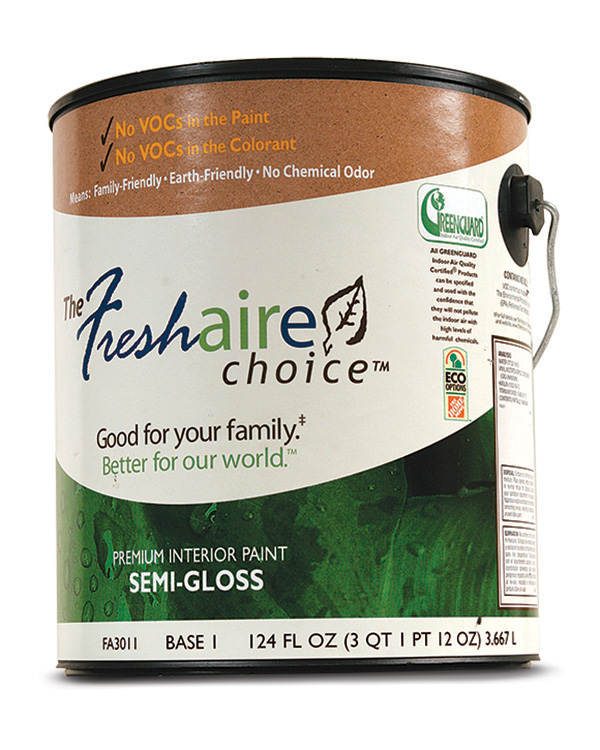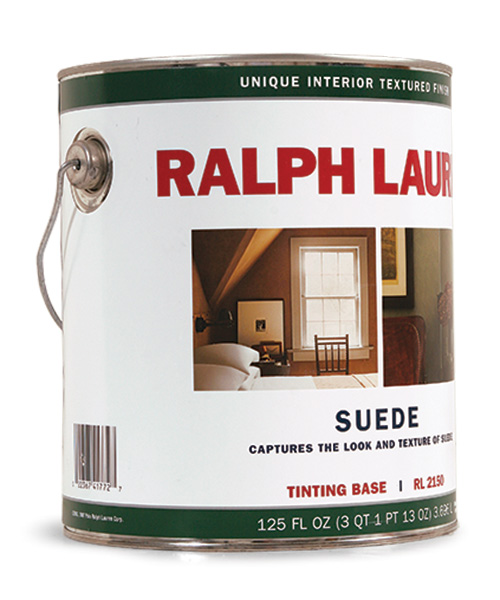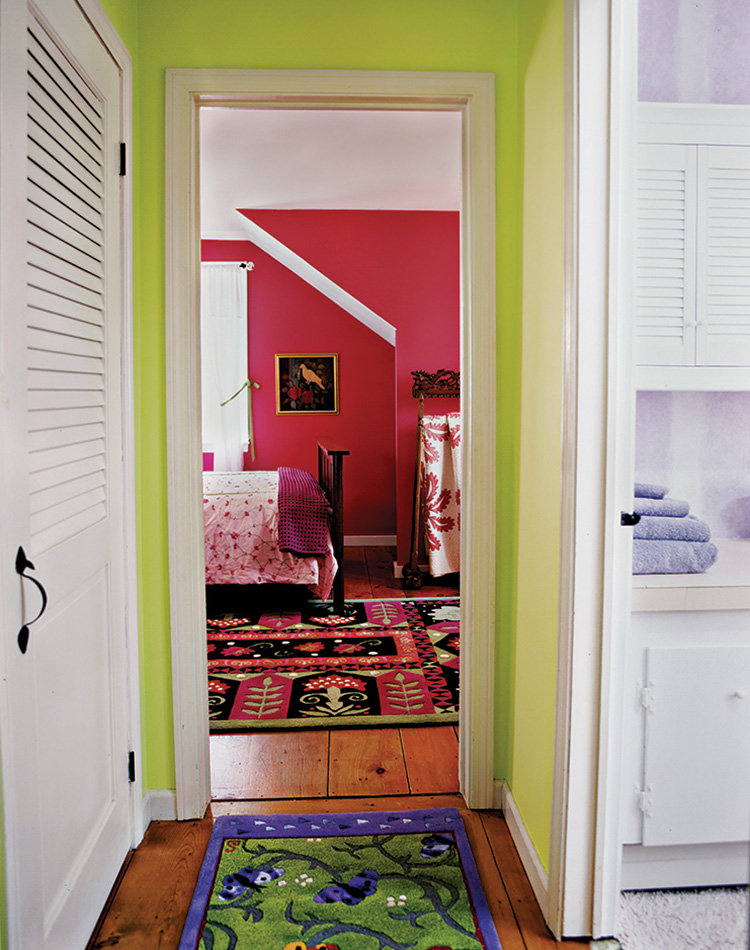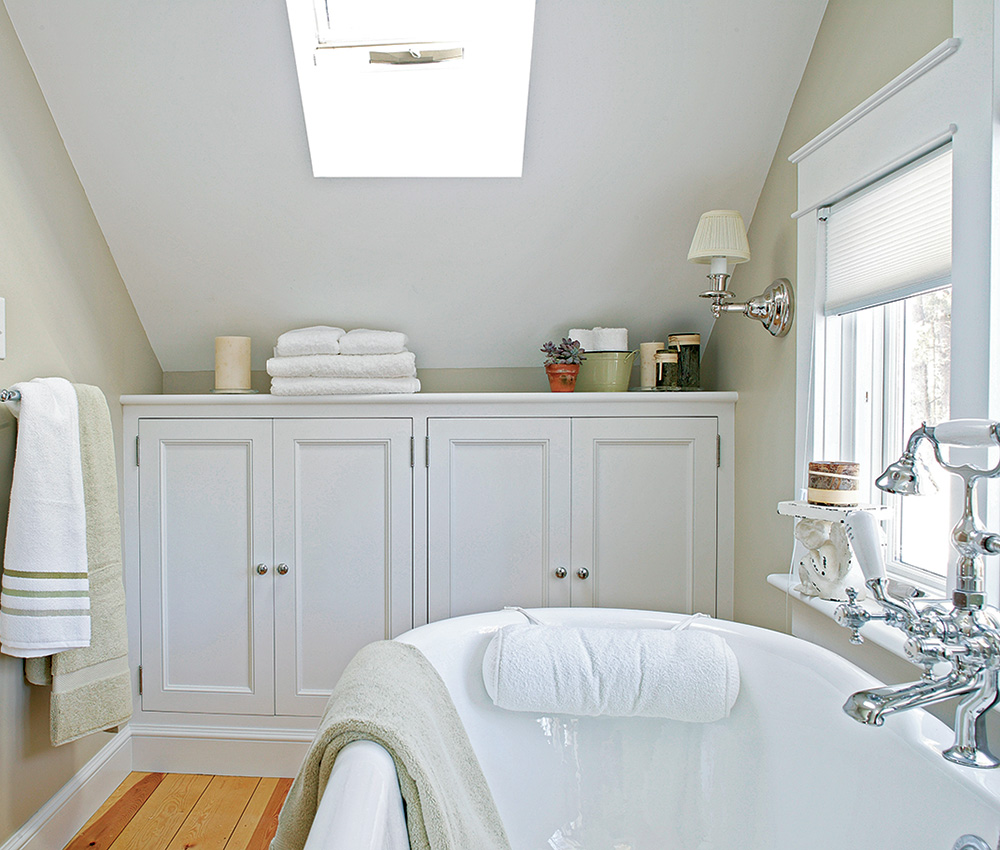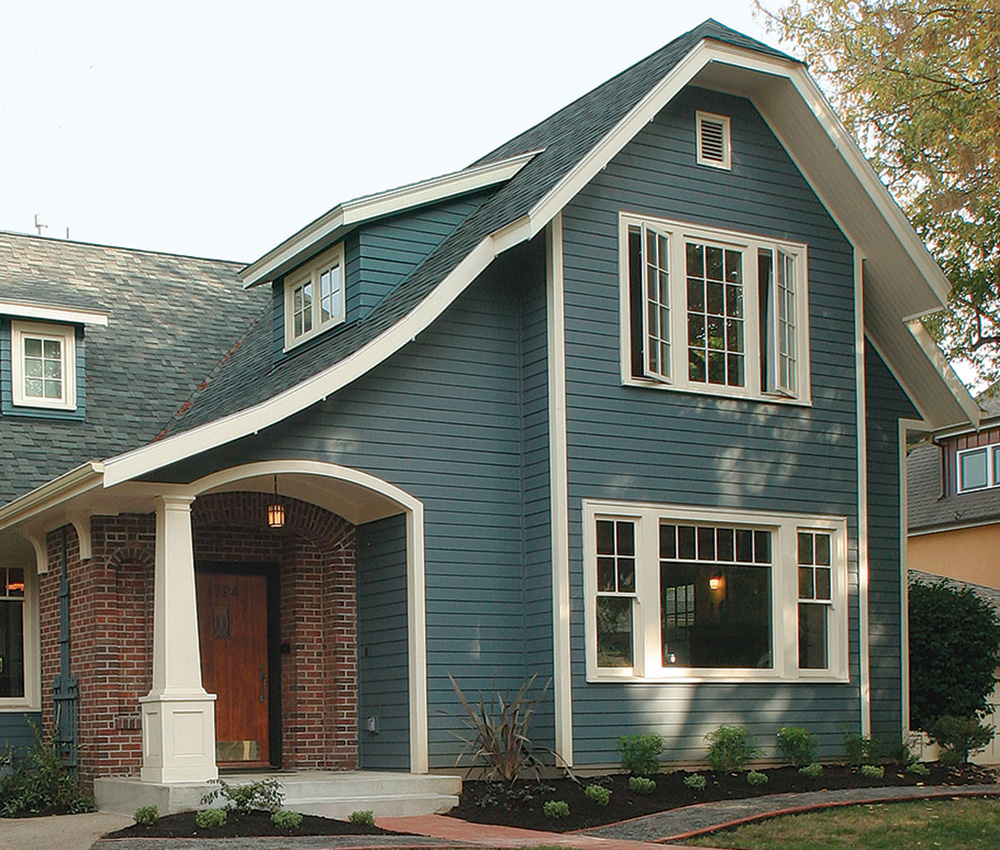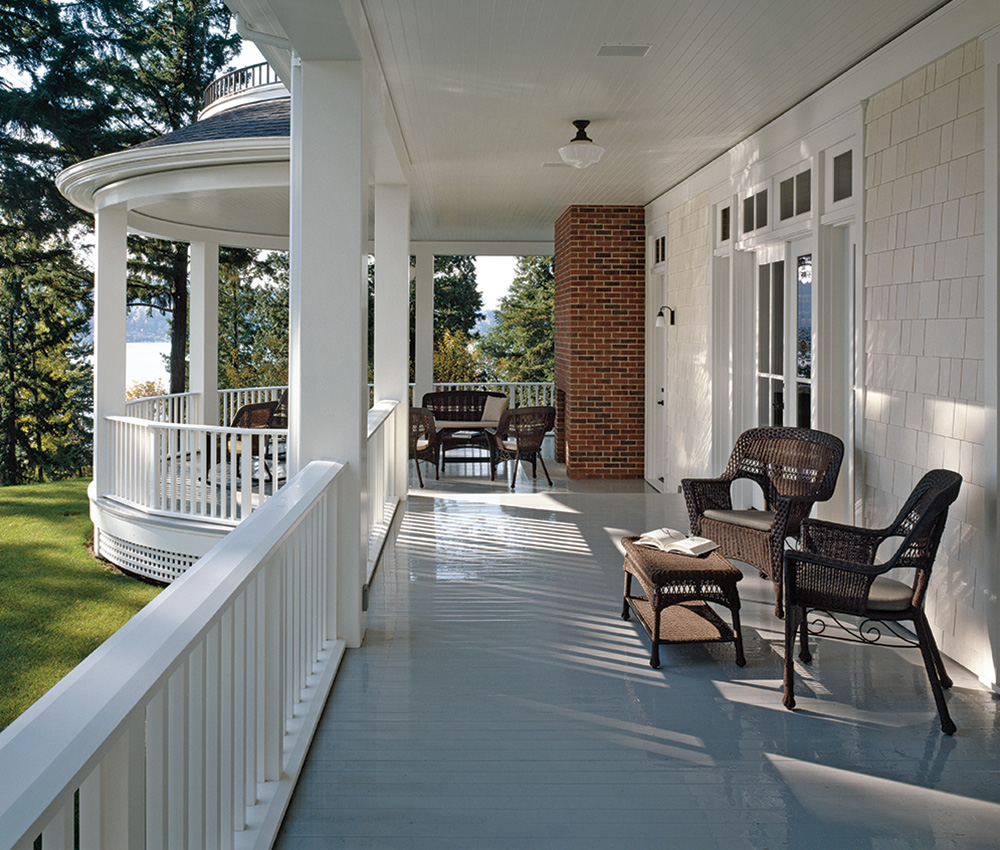Why Pay More for Paint?
Because the binders, pigments, and additives that make long-lasting, durable finishes don’t come cheap.
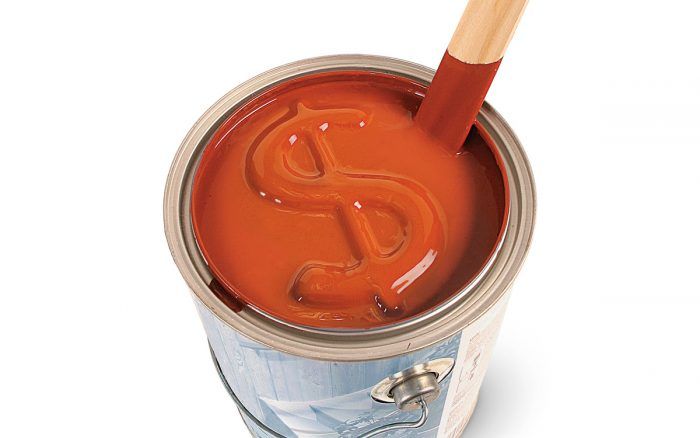
At one end of Lowe’s 60-ft.-long paint aisle is a shelf stocked with Valspar Duramax exterior latex paint, $33.98 a gallon. nearby is Olympic Premium exterior latex paint, $22.98 a gallon. Is the Valspar 33% better than the Olympic? And other than price, how would a buyer know?
“Good paint and cheap paint look the same when you open the can,” says Bob Welch, technical director for the Master Painters Institute. Where they differ is in the binders, pigments, and additives the manufacturer has used to make them. How long paint lasts, how easy it is to apply, and how well it hides surface imperfections all depend on its ingredients.
Even if the ingredients are listed on the label (often they’re not) or on the material safety data sheet, buyers likely won’t understand what they are or what they do. Still, there are ways to narrow the field. Understanding how the basic components of paint work together is a good place to start.
Latex has won the paint wars
Increasingly, house paint means latex paint. Water, rather than oils or alkyds, makes up the carrier, a liquid that disperses other ingredients into a uniform paint film. one reason for the shift toward latex paint is tougher government regulations on the amount of volatile organic compounds (VOCs) allowed in paint. Another is that latex paints perform well, especially outside, and now rival the workability of oil-based paint.
Manufacturers haven’t abandoned oil paints, but that’s not where their money is going. “they are not investing research-and-development dollars into alkyd technology,” says Steven Revnew, marketing director at Sherwin-Williams. “It’s all going into waterborne technology.”
Professional painters have made the switch, too, although some prefer oil-based paints for high-wear surfaces like handrails or kitchen cabinets because they think the paint film is harder and more durable. Tim Leahy, a painter in Newport, R.I., loves the “beautiful, hard, glossy oil shine” and the way oil-based paint behaves in spray equipment. Leahy also likes exterior oil-based primer because it soaks deep into raw wood.
Leahy isn’t alone, but latex paint is getting undeniably better as oil-based paint becomes harder to find. “the reasons for using oil are shrinking as each year goes by,” Richmond, Va., painter Brian Doherty says, somewhat wistfully.
The 4 basic ingredients
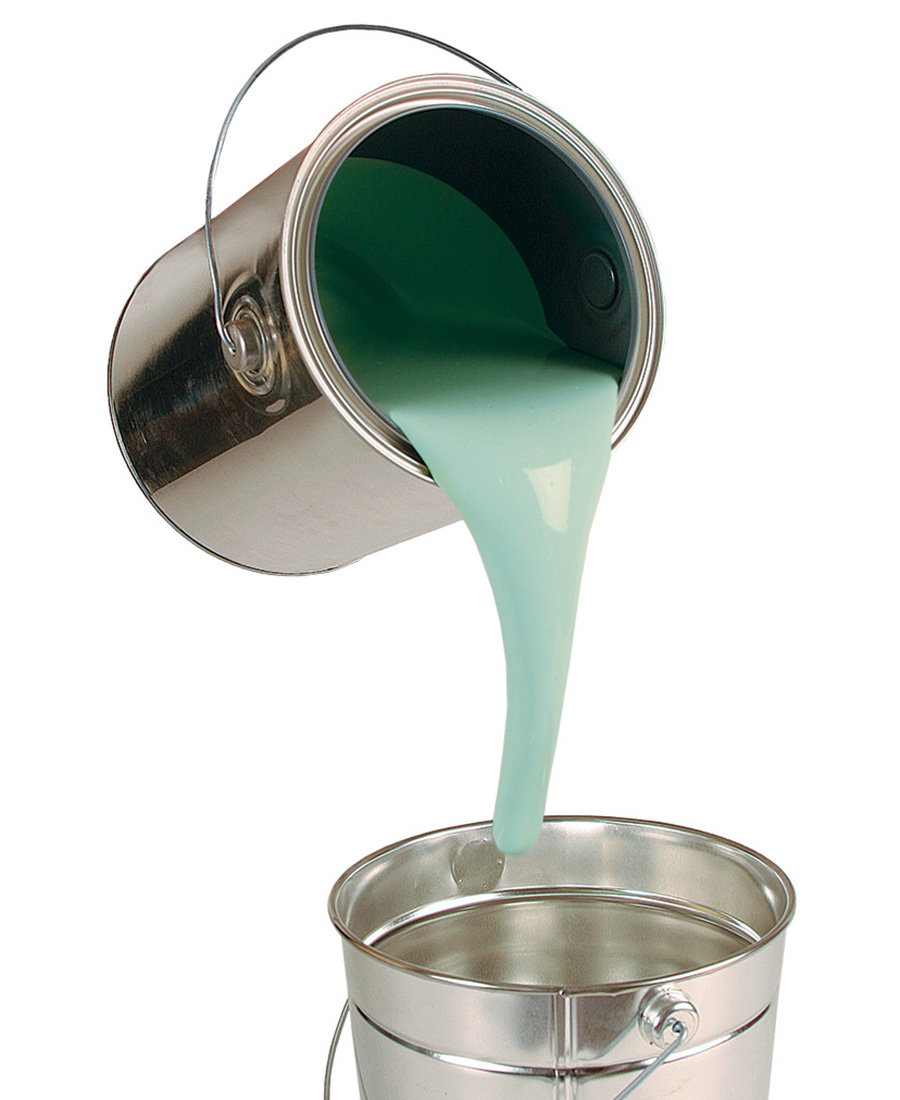
Carriers: Carriers are typically the largest volume component of paint and are used to transport the ingredients that form the cured paint film from the can to the surface. Water is the carrier in latex paints, and mineral spirits is the carrier in most oil or alkyd paint.
Binders: Of the main ingredients in paint, the binder is one of the most expensive and most important. Common binders in latex paints include acrylic, vinyl acrylic, and styrene resin. Binders are the key to performance qualities such as durability, UV-light resistance, color retention, and flexibility. And binders give paint its sheen.
Pigments: Pigments give paint color as well as a quality called hide, the paint’s ability to cover a surface with a minimum number of coats.
Additives: Additives are used to enhance a paint’s workability, including leveling and splatter control, and performance, including mildew resistance.
Binders add durability, flexibility, and sheen
Of the main ingredients in paint, the binder (also called the resin or polymer) is among the most expensive. binders are the glue that holds the paint film together, and they are the key to durability, resistance to UV-light, color retention, flexibility, and a variety of other performance attributes that are particularly important in exterior paints. The most common binders used in latex paints are acrylic and vinyl acrylic, though styrene resins are sometimes used.
All-acrylic paints are typically more durable and more expensive than paints made with vinyl-acrylic binders. This distinction should be clearly marked on the label. Revnew calls vinyl-acrylic the “entry point” for exterior coatings. Using vinyl-acrylic instead of all-acrylic binders reduces costs, but it also lowers the paint’s ability to expand and contract and to protect against damage from UV-light.
The supremacy of 100% acrylic resin is not absolute, though. Welch prefers to think of it as an indicator of quality, not a guarantee. Manufacturers can make proprietary resin blends that are just as good. Unfortunately, you might not know it from reading the label.
Resins also help to give paint its hardness and sheen. In paint-industry lingo, flat paints have a high pigment-volume concentration, or a high ratio of pigments to binders. Gloss and semigloss paints have a lower pigment-volume concentration. because binders often cost more than pigments, glossier paints are generally more expensive.
Pigments help paint to cover effectively
Pigments give paint its color and what the paint industry calls hide, the paint’s ability to cover a surface with a minimum number of coats. Prime pigments include red and yellow iron oxide, phalocyanine green or blue, and titanium dioxide. Titanium dioxide is white in color but is used in both light and dark paints. It is an important pigment because it is particularly effective at giving paint better covering qualities than low-cost bulk pigments, called extenders.
| Written warranties are an indication of the manufacturer’s confidence in the paint’s durability, and therefore are a good measure of overall quality. Warranties range from a year or two all the way up to a “lifetime,” typically meaning for as long as the paint buyer owns the house.
Duration, a top exterior paint from Sherwin-Williams, for example, is warranted not to blister or peel for as long as the purchaser owns the home. If the paint film does fail, the company says it will provide enough paint to fix the problem or will refund the original purchase price. The catch, of course, is that you’ll have to provide proof of purchase if you want to file a claim. And manufacturers don’t pay for the labor required to prep the surface and apply a new coat of paint. Also, the deal is off if the surface has been improperly prepped or if the paint has been applied incorrectly. Lifetime warranties from other manufacturers are similar for the best (and most expensive) paints in their lines. The warranties are generally not transferable to a new owner. Whatever the fine print says, longer warranties are typically a sign of better-quality paint. |
Getting the right proportion of titanium dioxide in a paint formulation is tricky. “The challenge is that more isn’t always better,” says Revnew. “It’s really the whole pigment package. There is a certain level of titanium dioxide where you optimize hide, and adding any more is not going to make a difference.”
Extenders, such as calcium carbonate, talc, silica, and clay, could cost less than prime pigments, but Welch says it would be a mistake to think their only role is to make paint less expensive to manufacture. “The proper combination of prime and extender pigments will give better performance than using only prime pigments and add properties not obtainable with prime pigments alone,” Welch says.
Taken together, pigments and resins make up most of paint’s solids, the materials that form the film when the carrier has evaporated. One old chestnut in the paint industry is that higher solids content predicts a better-performing paint. Is at least this much true?
“It can be,” says Jim Stange, senior brand manager at ICI Paints, which manufactures several brands. “It’s one of the things that indicate quality. Paint solids are one thing, but thickness (viscosity) and ease of application also are important.”
Additives improve workability and performance
Additives are the last principal ingredient of paint, and they can affect everything from workability and mildew resistance to leveling, stability, and splatter control. Although additives are not high-volume ingredients, they make a big difference in performance.
Mildew resistance is especially important for exterior and kitchen and bathroom paints, and it should be clear from the label whether a particular type of paint contains a mildewcide, according to Debbie Zimmer of the Paint Quality Institute. Mildewcides are expensive to manufacture and handle, Zimmer says, so leaving this ingredient out is an easy way to save money. Really cheap exterior paint might not have one at all.
In general, consumers have no real way of knowing what additives a manufacturer has used. It’s a fair bet that a company’s top-of-the-line exterior paint will have more additives than its economy-grade interior paint. According to Welch, when buying paint, it is important to be specific about where it will be used. For example, additives that allow exterior paint to shrink and expand with changes in moisture and temperature and that protect the color from fading aren’t often important for interior paint. Paint for high-moisture areas such as bathrooms could have different additive packages than paint that won’t be subjected to high humidity.
Professional painters use several aftermarket additives to increase paint’s workability and performance. A favorite is Floetrol (or Penetrol for alkyd paints), a conditioner made by Flood (www.flood.com) that is used to improve flow and leveling, minimize brush and roller marks, and make it easier to use paint in spray equipment.
Don DeMair, a New Jersey pro, keeps Floetrol on hand and says it can make a big difference in extremely dry conditions when paint would set up too quickly. If he uses an additive, however, DeMair says he’s careful to mix it into all the paint he’s using so that sheen and color are the same from one can of paint to the next.
Packaged mildewcide can be added as further protection against mold and mildew growth. top-quality paints might already contain this type of protection, and a mildewcide doesn’t guarantee that mildew won’t appear on a painted surface under the right conditions.
“I’m more of a fan of doing an extreme wash preparation before I paint,” says Rhode Island pro Tim Leahy. He uses a commercial cleaner like Jomax (zinsser.com) and believes that starting with a clean, mildew-free surface is probably the best insurance.
Virginia painter Brian Doherty, however, uses a mildewcide if he thinks it will help. “If I can see that mildew is a recurring problem, I will go ahead and use a mildewcide no matter how good the paint itself is, just as a backup,” he says.
Although additives can be helpful, the paint industry doesn’t universally recommend them. Zimmer says that additives have the potential to hamper paint performance, especially when used in excess. “While you may be able to apply the paint better and have it open longer, down the road that paint may not perform as well as you expected,” she says.
The best advice is probably to use additives judiciously, and never in higher concentrations than recommended by the manufacturer. As Zimmer puts it, if it’s 100°F outside and the paint dries on the brush before you can apply it, maybe it’s not the best day to be painting.
What’s coming out of paint is just as important these days as what’s going into it. Government regulations and a push for healthy indoor-air quality are driving down the levels of volatile organic compounds (VOCs) allowed in paint.
VOCs, the solvents that waft into the air as paint dries, are a contributor to smog. Rules in effect nationally allow 380 grams of VOCs per liter (g/l) in nonflat paints and 250 g/l in flat paints. (Specialty paints have higher limits.)
In two regions of the country, however, the regulations are less forgiving. The Ozone Transport Commission, which writes model regulations for 11 states in the Mid-Atlantic and Northeast, limits VOCs in nonflat paints to 150 g/l and flat paints to 100 g/l. Rules in the South Coast Air Quality Management District, covering parts of the Los Angeles area of California, are even tougher. The national rules are due to stiffen in 2009.
Manufacturers are already producing low- and no-VOC paints, but there’s a catch: Government VOC rules apply to the tint base, not to the colorant added at the paint store. Further, national rules cover only VOCs that contribute to smog while exempting potentially harmful chemicals such as acetone and limonene, a powerful citrus solvent.
Both latex and alkyd paints have traditionally been tinted with universal colorants, and their contribution to the total VOC content of paint can be “significant,” says Carl Minchew, director of product development at Benjamin Moore. How much, exactly, depends on the color and the volume of tint added at the store, but Minchew says it’s possible that a colorant could push paint over the allowed threshold for VOCs even though the tint base itself falls within the guidelines.
Benjamin Moore and ICI are among manufacturers that have developed new types of colorants that do not add VOCs to paint. Benjamin Moore’s is called Gennex, which goes into its Aura line of latex paints. ICI’s no-VOC colorant can be found in its Freshaire paints. A number of smaller companies also have developed no-VOC and low-VOC paints.
At least three organizations set green standards for paint—Green Seal, Greenguard, and the Master Painters Institute (MPI)—and they list certified products on their Web sites.
Green Seal’s certification requirements (called GS-11 standards) cover several performance standards as well as limit VOC content and ban some chemicals altogether (www.greenseal.org). Green Seal’s revised rules released earlier this year cap VOCs at 100 g/l for nonflat and 50 g/l for flat paints. By 2010, GS-11 standards also will cover colorants added at the point of sale.
Greenguard takes a different approach, measuring chemical emissions from applied paint rather than setting limits on what’s in the can. As a result, its standards already measure the effect of colorants (greenguard.org).
MPI, which also writes performance standards for paint for the U.S. and Canadian governments, maintains a list of approved green products at its Web site (paintinfo.com).
Air-emission standards are becoming increasingly important for builders trying to meet green-building requirements, such as those of the LEED for Homes program, a set of criteria that covers a long list of construction and performance issues. When it comes to paint, LEED for Homes uses Green Seal’s GS-11 rules.
A good paint store can mix just about any color you want, but if you’re looking for a little help in picking just the right shade of blue, you can turn to Eddie, Martha, or Ralph.
That’s Eddie Bauer, Martha Stewart, and Ralph Lauren, each of which has a line of designer paint. Judging from Web sites for each of the three paint lines, the choice is more about color than performance. Eddie Bauer paints, for example, are divided into four groups: Lakeside Cottage (“light, refreshing”), American Farmhouse (“warm, natural”), Craftsman Bungalow (“dark, muted”), and Ridgeline Cabin (“deep, rich”). Martha Stewart paint represents an “extraordinary collection of colors drawn from nature, from history, and from Martha’s favorite things.” Martha Stewart and Eddie Bauer paints are both manufactured by Valspar, a brand sold at Lowe’s.
The website for Ralph Lauren paint, which is made by ICI Paints, is the only one of the three that directly mentions the paint itself. According to ICI, Ralph Lauren paints are high-quality coatings with a high solids content, all-acrylic resins, and a lifetime warranty—the same claims that could be made by other manufacturers for their top paints. But instead of having to look through thousands of individual color samples, consumers already have some of the sorting done for them, ICI says, and that can be perceived as a big benefit.
In addition to solid colors, the Ralph Lauren line includes paints that produce suede and metallic finishes. And they can be well worth the premium price, says interior designer Debbie Wiener.
“I like Ralph Lauren paints and I do think they offer some unique textures and paint effects that warrant the higher price tag,” Wiener says. “They’re more expensive, but you can save by not hiring a professional decorative painter.”
The world of boutique paints also includes Farrow & Ball, a small English company that makes oil- and water-based paints in 132 colors and 13 finishes. Some cost more than $160 a gallon. Farrow & Ball attributes the high cost to small-batch manufacturing, the use of naturally occurring pigments where possible, quality testing at each stage of production, consistent color accuracy, and no cheap fillers. Moreover, the paints have no formaldehyde or ammonia, and most are classed as no-VOC coatings, according to the company.
But is the color really any different? Some designers think so, but not necessarily paint pros. One painter who typically works on high-end jobs where Farrow & Ball paint is specified has substituted another brand “in a pinch.”
“We’ve matched their colors at our local paint store and applied it, and the designer comes through and says, ‘Oh, yes, we love this color,’” the painter says.
Everyone agrees that you get what you pay for
While consumers have little way of knowing exactly what’s in a can of paint, both the paint industry and paint professionals say price is a good indicator of quality. “The do-it-yourselfer can most often identify the top-of-the-line paint by a top-of-the-line price.” says Zimmer. “Purchase your favorite manufacturer’s paint, but always ask for the highest price point because in a can of paint, you will absolutely get what you pay for.”
Pros agree. “It definitely matters,” says Leahy. “Quality is there with the higher-priced paints. You get what you pay for. If you go to a big-box store and buy cheap paint and apply it, you’re going to be repainting your house in 500 days.”
In the end, buyers will do well by sticking with a brand they’ve come to trust, or by relying on recommendations from a professional. Whether it’s Benjamin Moore, Sherwin-Williams, Pittsburgh, or Farrow & Ball, you can be sure that it won’t be their cheap stuff.
One other thing: even the most expensive paint will fail if you don’t prepare the surface properly. “If you do proper prep and the surface is ready to go, sometimes that cheaper paint might do ok,” says Leahy. “but if you do a lousy prep job, it’s going to fail.”
Magazine extra: Check out additional tips and advice from professional painters that will improve your next paint job.
